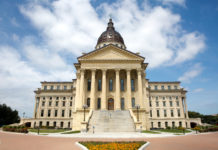Last week a new CMS letter was released: Revisions to the State Operations Manual (SOM), Appendix
- CMS is updating Appendix I, Task 6, Exit Conference, with more specific information regarding sharing specific regulatory references or tags during the exit conference.
- CMS is also reinstating guidance to Life Safety Code surveys that was inadvertently removed regarding procedures for Task 4, Information Gathering, within Appendix I of the State Operations Manual. There are no changes to the guidance being reinstated back into Task 4.
Read a detailed summary from LeadingAge National below.
Task 6 – Conduct of Exit Conference
- Surveyors are instructed to:
- Conduct the exit conference with the facility administrator or anyone designated by the administrator; to invite a residents’ group officer, if one exists, or resident representative.
- Provide specific information necessary for POC, if there is a need for a POC, but not surveyor worksheets.
- The survey team may follow the procedures for either non-LTC or LTC described in Chapter 2, Section 2724C – Presentation of Findings, depending on the degree to which the team judges the tag codes to be important to understanding the nature and location of the deficiency, and the needed corrective actions. Facility representatives typically accompany LSC surveyors on building tours to improve familiarity with preliminary findings and exit conference proceedings.
- Not make general statements such as, “Overall the facility is very good”; to ‘stick to the facts’; treat requirements as equally as possible; cite problems that clearly violate regulatory requirements.
- Provide the facility with the opportunity to discuss and supply additional information, if necessary, and attempt to resolve differences regarding deficiencies.
- Review alternatives to compliance if appropriate, such as, waivers of specific life safety code requirements or the suitability to achieve compliance using the FSES.
- Provide the information if asked by the provider for the specific regulatory basis or the specific tag (except as noted in Chapter 2, Presentation of Findings), but always caution that such coding classifications are preliminary and provided only to help the provider gain more insight through information provided in the interpretive guidance. If the facility does not specifically ask for the regulatory basis or tag, the survey team uses its own judgment in determining whether this information would provide additional insight.
- Determine scope and severity in accordance with procedures in Chapter 7, §7400 of the SOM. This can occur on-site or presented to the facility on the Form CMS-2567.
- In accordance with [the respective] State Agency policy, present the Form CMS 2567, on site or after supervisory review, no later than 10 calendar days following the survey.
Task 4 – Information Gathering
- Includes instruction for more detailed inspection/observation, including both inside and outside of the building:
- Determination of type of building construction; floor-to-floor separations; corridor wall construction; smoke barrier locations; construction and condition; any vertical opening construction including access doors; and a complete room-by-room, floor-by-floor, walk through of the facility. At minimum, one smoke barrier on each floor or wing; all fire barriers; all hazardous areas including doors into the area; all exit stairs, doors, signs; resident room doors for condition, latching and fit; the fire alarm system; the sprinkler system; the emergency power generator set; corridor walls; emergency lighting; and medical gas storage, if applicable. Smoke and fire barriers; corridor doors for latching, operation and fit; electrical outlets, extension cords, oxygen in use signs (where applicable); portable space heaters.
- Corridor walls and ceilings for proper construction; all hazardous areas for proper door type; sprinkler installation or fire separation construction where applicable; maintenance of fire extinguishers and exit signs; fire alarm pull stations and alarm devices; smoke detectors where required or provided; corridor obstructions and distances to exits; exitways, including the doors and door hardware, lighting, and exterior walkways.
- Wastebasket size, drapes and cubicle curtains for flammability; location of the sprinkler head in relation to cubicle curtains and walls – checked for obstruction/interference to the water spray pattern; walls and ceilings for unsealed penetrations and proper construction.
- Fire alarm control panel; connection to the fire department or external remote station; review of sprinkler systems for complete or only partial coverage; kitchen range hood fire extinguisher system; emergency lighting or power system, including on-site generators.
- Facility fire plan including fire drill records and staff interviews to determine staff actions and responsibilities during a fire or emergency. An actual fire drill demonstration may be requested if there is a question of the adequacy of staff response found in the documentation of the monthly fire drills.
- Determination of type of building construction; floor-to-floor separations; corridor wall construction; smoke barrier locations; construction and condition; any vertical opening construction including access doors; and a complete room-by-room, floor-by-floor, walk through of the facility. At minimum, one smoke barrier on each floor or wing; all fire barriers; all hazardous areas including doors into the area; all exit stairs, doors, signs; resident room doors for condition, latching and fit; the fire alarm system; the sprinkler system; the emergency power generator set; corridor walls; emergency lighting; and medical gas storage, if applicable. Smoke and fire barriers; corridor doors for latching, operation and fit; electrical outlets, extension cords, oxygen in use signs (where applicable); portable space heaters.



